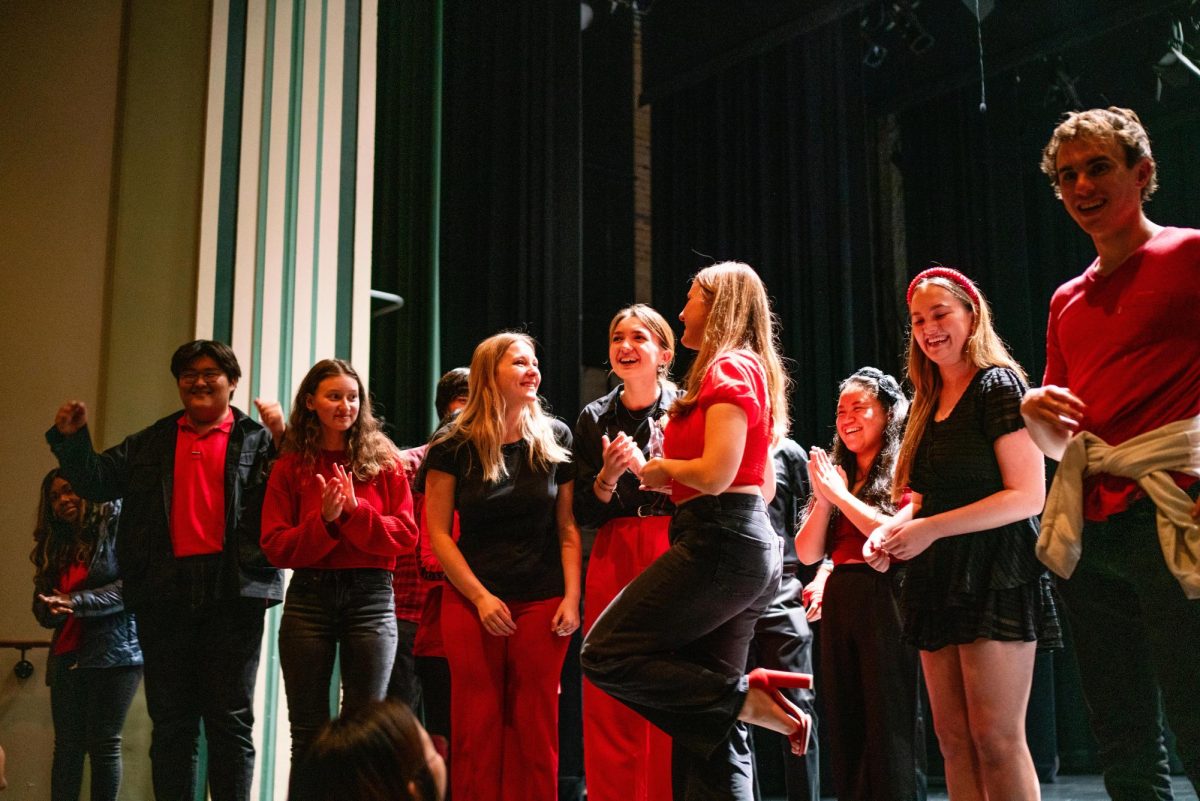The New York Times reported in August that the U.S. Postal Service lost a net total of $740 million in the third quarter, an improvement from the previous quarter in which the post office lost $1.9 billion. It is unexpected, then, that mail is the focus of one of the Krannert Art Museum’s latest exhibitions: “Return to Sender: Ray Johnson, Robert Warner and the New York Correspondence School.”
Despite what seems to be society’s decreasing use of what is dubbed “snail mail,” it has become the focal point of theory and research for Miriam Kienle, the exhibition’s curator and an art history doctoral candidate at the University.
“Maybe (the exhibit) is, for me, a sort of revisiting of this massive public structure that was so much a part of people’s lives,” she said, pointing out that there might be some benefits to the traditional postal service that visitors can ponder in her exhibition.
“The material trace of the mail object that you (take) time to make has some trace, and it sits with you. It’s not just instantaneously gone,” she said. “I think there’s some value in people understanding what the structure of the post office is.”
Her exhibit focuses on the artwork of Ray Johnson and his protégé, Robert Warner. Johnson, who has been known as one of the world’s “most famous unknown artists,” has made many collages throughout his career. The ones on display at the Krannert Art Museum are compilations of “ephemera,” as Kienle calls it, or things of no lasting significance. Work from other artists involved in the so-called “New York Correspondence School” also accompany Johnson’s pieces. Some of the pieces contain ephemera considered to be from “mail art” and some of the pieces contain objects that were never actually mailed out.
Get The Daily Illini in your inbox!
The name of the exhibit quotes one of Johnson’s favorite messages that he would write to his fellow artists before sending them one of his pieces: “Return to sender.” Johnson would send pieces off to fellow artists, ask them to add or subtract to what he had and then ask them to send the pieces off to another artist until they eventually made it back to him.
“You can think of it as kind of like a game of telephone,” said Kristin Romberg, an associate professor of art history at the University.
Similar to a game of telephone, the pieces would transform into something completely different from what Johnson had originally made. The end products, while often considered visually overwhelming, are nonetheless stimulating and catch the eye.
“This stuff is much more intricate than it comes across in the reproductions that I’ve seen,” said Margery Osborne, Krannert Art Museum patron and professor in Education. “It’s really cool to be able to come and see somebody who is this kind of cutting edge and famous but isn’t a mainline artist … It’s a real surprise out here in the middle of nowhere to have a museum that has this kind of stuff in it.”
One thing about Johnson’s artwork that interests Kienle is how they can appear to be difficult to understand.
“I think Ray Johnson really loved that. He really loved when people misunderstood each other because, for him, they were trying to connect and make a correspondence, but they never exactly correspond,” she said. “In a global world, he sees it that we have to kind of traverse difference and observe it in some way.”
This idea of communication, its relation to how artists market themselves and how people interact with each other have guided not only Kienle’s study, but also the learning of fifth grade students in Urbana.
Rusty Clevenger, an art teacher at Wiley Elementary School, and his student teacher, Kamila Glowacki, showed their students Kienle’s exhibit as part of an ongoing project they are doing on communication.
Clevenger said that — much like how Johnson expressed himself and his individuality in the form of repetitive icons — the students created their own symbols and incorporated them into postcards on display in the Krannert Museum’s basement.
“When (the students) made their artwork, we kind of looked at the Ray Johnson stuff and tried to articulate his process so the students (could) make something that relates to themselves,” Clevenger said.
Museum patrons can take copies of some of the students’ postcards, add to them and — in the spirit of Johnson’s “return to sender” — modify the postcards before sending them to Wiley Elementary as part of a larger art project there.
The students initially studied Kienle’s exhibit as part of an art immersion program called “Krannert Art Museum – Week at the Museum,” or KAM-WAM, put on by the art museum on campus. Students spent hours in the museum at different exhibits, but Clevenger and Glowacki both liked Kienle’s exhibit as a potential starting ground for students to then make their own artwork.
“I like that it’s not a completely serious form of art. It’s much more loose,” Glowacki said.
Kienle said that she has sometimes thought of Johnson as an informal prelude to the Internet and electronic social media in his attempt to connect people. Now, in an age of digital and instantaneous communication, Kienle said, it is almost impossible to misunderstand someone.
“There’s seamless communication,” she said, but she thinks Johnson challenged this idea. “Ray Johnson says, ‘No, let’s look at the seams. It’s not seamless.’”
Matt can be reached at [email protected].








